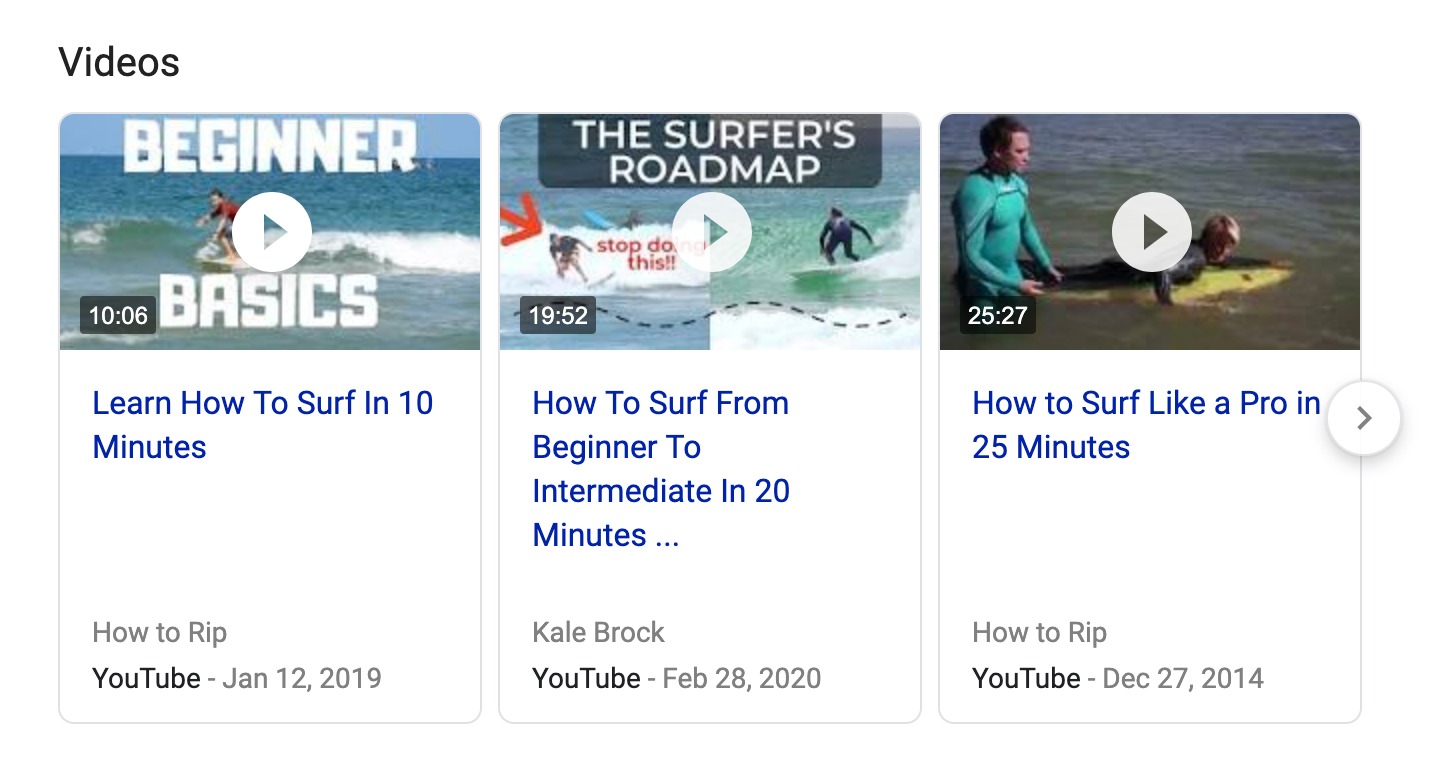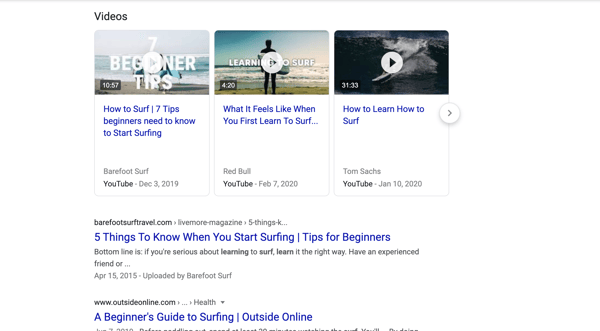Videos are a great way to engage and convert prospective customers on your website. But the videos are only effective once the viewer is on your website.
So the big question is how to get your videos seen by Google.
When videos are properly optimized for SEO, videos can add a huge boost to website traffic.
Not only will a video help you stand out compared to the other 9 listings on a Google Search Result page, but they can also help you jump up in rankings with a featured snippet.
What is Video SEO?
The point of Video SEO is to make your videos show up when people search for different topics or keywords. There are are few ways you can think about video SEO:
- Help a webpage with a video rank higher
- Help a video rank higher for Google “Videos”
- Get a video to show up as Featured Snippet on Google Search
In this article, we will mainly focus on the first topic. Our goal is to help you use videos on your webpages to support those webpages, as opposed to getting the video to rank individually by itself.
Here is how you can optimize videos on your website to increase search rankings:
How to Optimize Videos for SEO
- Choose the right video hosting platform
- Transcribe your video
- Use structured data
- Use an eye-catching thumbnail
- Only use one video on a webpage
- Only use one video in one place on your website
- Keep in mind usual SEO best practices
Let's go through these one by one!
The 7 Steps for Optimizing Videos for SEO
1. Choose your video hosting platform
When choosing a video hosting platform, it’s important to think about your objective. If your goal is to have the videos themselves show up as video search results, YouTube is the best option because Google prioritizes it as a search engine in its own right.
However, there are downsides to using YouTube videos on your own website, including loss of branding control and unwanted popups.
For videos hosted on your own website, it’s better to use a video marketing platform like Sendspark and Wistia to host the video.
2. Use a video transcript
Google loves video transcripts. Not only are video transcripts good for people who are hard of hearing or in a setting where they can’t play sound, video transcripts make it easier for search bots to index your videos.
The video transcripts provide additional text for keywords and key-phrases, which allows your videos to rank for more search queries.
3. Use Structured data
To make sure Google can read all of the information around your video, use structured data. The required properties for video structured data includes:
- Description - a detailed description of your video
- Name - the title of your video
- Thumbnail URL - a url linking to the thumbnail file of your video
- Upload date - the date the video was published, in ISO 8601 format
And then there are plenty of additional recommended properties you can use to boost your video SEO. Read more about these properties on Google’s documentation.
Also, Google provides special mark up instructions for recipes and how to videos, so be sure to check these out if you’re making videos in those categories!
4. Make your video thumbnail pop
Like the cover of a book, a video thumbnail is key for getting potential viewers interested in watching your video. When your video shows up in search results, the video thumbnail will make the difference whether people click or not.

^ see how video thumbnails help you decide which to watch
Wistia found that videos with custom thumbnails earned 30% higher click-through-rates. Read more here about how to customize video thumbnails to increase your click-through rate.
5. Only use 1 video on a webpage
Google will only crawl one video on a webpage, so there is no reason to use more than one on a single webpage. Instead, make unique website pages for each of the videos you want to showcase.
6. Only use a singly video in 1 place on your website
Like with any SEO content, using 1 video in multiple places on your website will cannibalize yourself. Make sure each video is only on one page, and that page is optimized for your keyword.
7. Keep in mind usual SEO best practices
As always, make sure to use all of the basic SEO best practices you always use...
- Do keyword research
- Build domain authority
- Get credible backlinks
- Optimize for mobile
- And submit a sitemap!
Get started optimizing videos for SEO
Congratulations for finishing this article. You’re in a great place to optimize your videos for SEO!
One final tip is spend a little bit more time on Google’s documentation (link above) if you are self-hosting the videos, to make sure you’re using all of the recommended structured markup. (I didn’t want to overload this article with technical details).
If that’s not your ammo, video marketing platforms like Sendspark will handle all of the heavy lifting for your. Feel free to create a free account to start hosting marketing videos today!



